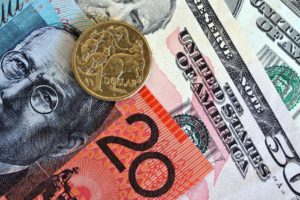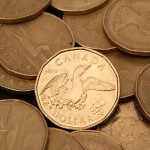 Australian dollar fell to lows unseen in 3.5 years against its US rival on Thursday, after the Federal Reserve Bank decided to pare back its monthly monetary stimulus at its policy meeting yesterday in line with expectations.
Australian dollar fell to lows unseen in 3.5 years against its US rival on Thursday, after the Federal Reserve Bank decided to pare back its monthly monetary stimulus at its policy meeting yesterday in line with expectations.
AUD/USD touched a daily low at 0.8711 at 1:45 GMT, also the pairs lowest point since July 20th 2010, after which consolidation followed at 0.8728, down 0.13% for the day. Support was likely to be found at July 20th 2010 low, 0.8684, while resistance was to be encountered at January 29th high, 0.8826.
On Wednesday the Federal Reserve announced that it will reduce the pace of its monthly asset purchases to 65 billion USD from the current 75 billion USD, in consonance with its plan to gradually withdraw from banks unprecedented accommodative policy. The central bank has undertaken three rounds of bond purchases since 2008, known as quantitative-easing stimulus strategy.
The Fed also maintained its benchmark interest rate unchanged at 0.00%-0.25% in line with expectations.
The central bank had been projected to continue trimming its monthly purchases by increments of 10 billion USD at the meeting in January and each one that follows to exit the program this year, according to experts participated in a survey by Bloomberg News, conducted on January 10th.
At the same time, US preliminary Gross Domestic Product probably increased at an annualized rate of 3.2% during the fourth quarter of 2013, according to the median estimate of economists, following the 4.1% gain recorded in Q3. The official figure is scheduled to be released at 13:30 GMT today. Better than anticipated result will certainly heighten the appeal of the US dollar.
Personal consumption expenditures in the United States probably rose at an annualized pace of 3.7% in Q4, after gaining 2.0% in the preceding quarter.
Meanwhile, the Aussie came under additional selling pressure, after HSBC Holdings Plc and Markit Economics reported that China’s final manufacturing PMI slowed down to a reading of 49.5 in January, from 50.5 in the preceding month, while preliminary estimates pointed to a reading of 49.6 this month. Values below the key level of 50.0 are indicative of contraction in activity in the sector. The sub-index of new orders from abroad decreased for a second month in a row in January, while the sub-index of output demonstrated a slight improvement. PMIs final value came in at a lower level than the preliminary reading, 49.6, announced on January 23rd. China is Australias largest export market.
In addition, the Housing Industry Association (HIA) said earlier on Thursday that new home sales in Australia fell 0.4% in December compared to October, after sales climbed 7.5% during the previous month.
Elsewhere, the Australian dollar was gaining against the euro, with EUR/AUD cross down 0.20% on a daily basis to trade at 1.5605 at 8:14 GMT. AUD/NZD pair surged 0.67% today to trade at 1.0714 at 8:14 GMT.
The central bank in New Zealand left borrowing costs unchanged at the all-time low level of 2.50% at its policy meeting today.
Reserve Bank of New Zealand said in a statement that “economic expansion has considerable momentum”, while adding that a return of interest rates to more normal levels can be anticipated “soon.” “While headline inflation has been moderate, inflationary pressures are expected to increase over the next two years. In this environment, there is a need to return interest rates to more-normal levels”.
This decision was “a slight disappointment,” said Imre Speizer, a market strategist at Westpac Banking Corp. in Auckland, cited by Bloomberg. “We expect the market to sell off the kiwi on a no-change decision but we don’t expect it to run away too much further as the market will start focusing on the March hike.”





